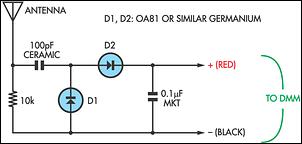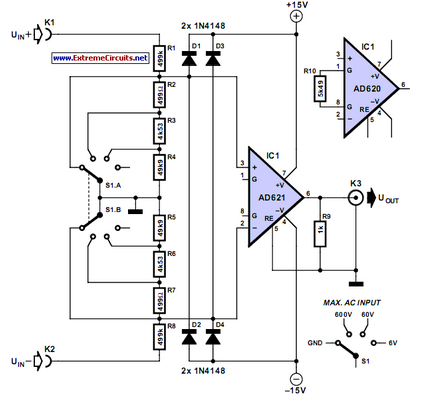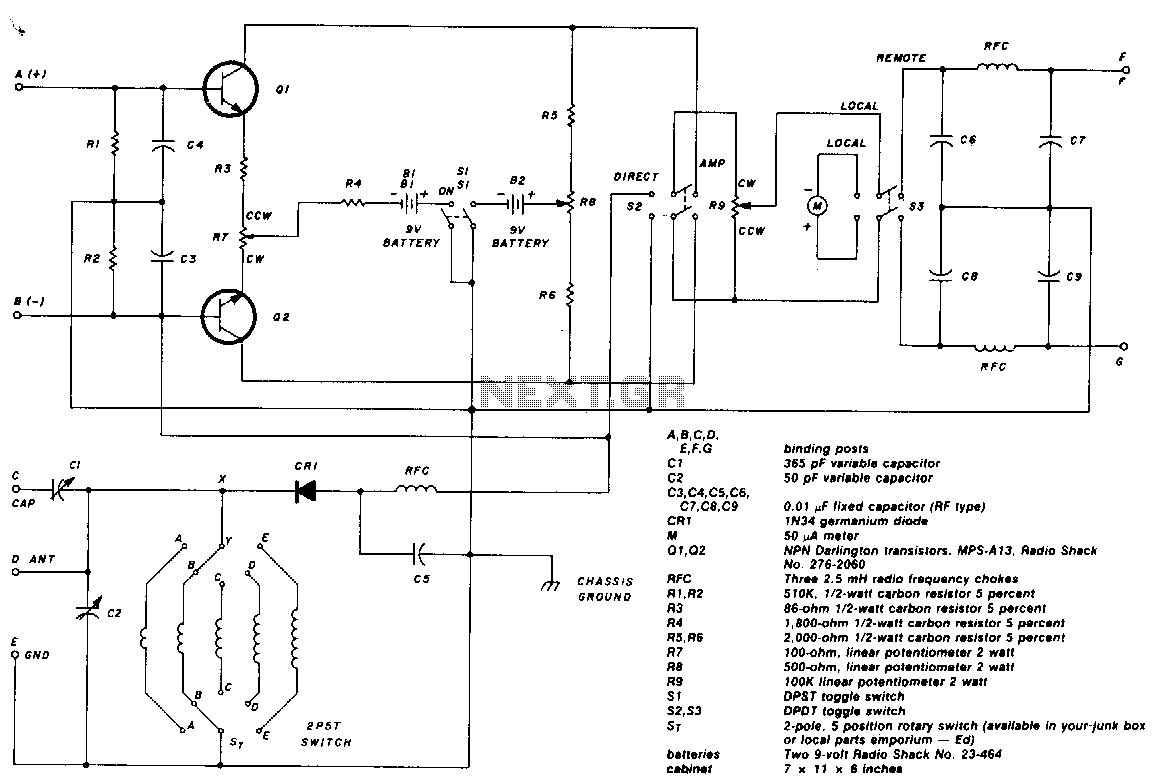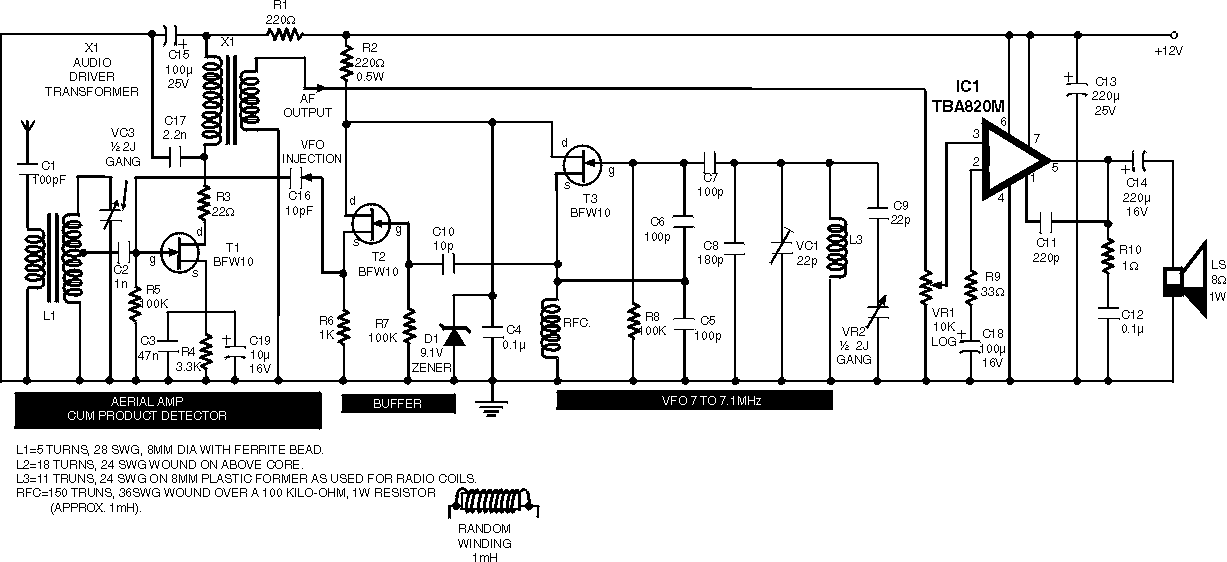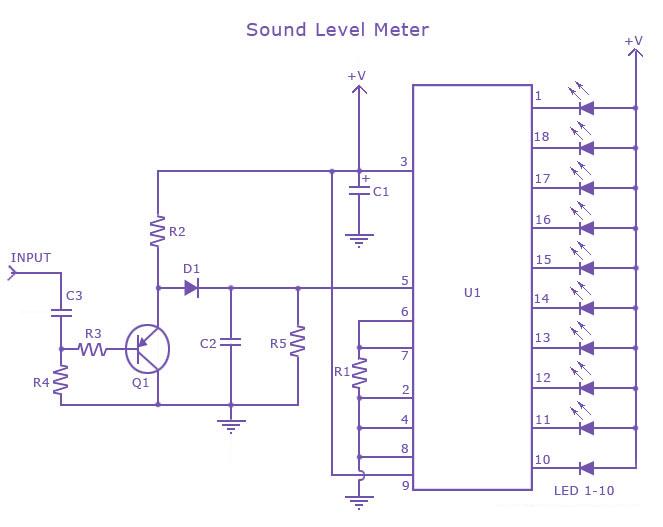
LC meter 16x1 LCD Display
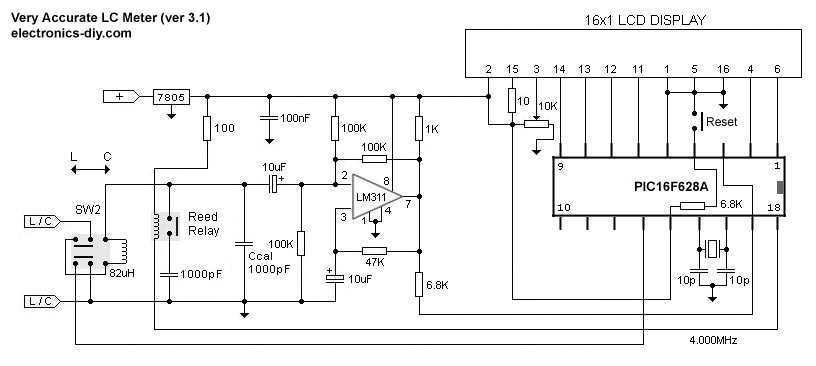
This is one of the most accurate and simplest LC inductance / capacitance Meters that one can find, yet one that you can easily build yourself. This LC Meter allows to measure incredibly small inductances starting from 10nH to 1000nH, 1uH to 1000uH, 1mH to 100mH and capacitance from 0.1pF up to 900nF. LC Meter`s circuit uses an auto ranging system so that way you do not need to spend time selecting ranges manually. Another neat function is the "Zero Out" switch that will reset the initial inductance / capacitance, making sure that the final readings of the LC Meter are as accurate as possible. More: To be able to determine the value of an unknown inductor / capacitor we can use the frequency formula given below.
The LC meter circuit is designed to provide accurate measurements of inductance (L) and capacitance (C) over a wide range of values. The design typically incorporates a microcontroller or a dedicated integrated circuit (IC) that processes the measurement signals. The auto-ranging feature is implemented using a combination of analog switches and resistors, allowing the circuit to automatically select the appropriate range based on the detected signal level.
The operation of the LC meter relies on the resonant frequency formula, which is given by:
\[ f = \frac{1}{2\pi\sqrt{LC}} \]
Where:
- \( f \) is the resonant frequency in hertz (Hz),
- \( L \) is the inductance in henries (H),
- \( C \) is the capacitance in farads (F).
To measure inductance or capacitance, the circuit generates a known frequency signal which is then connected to the inductor or capacitor under test. The microcontroller measures the frequency shift caused by the component and calculates the value of L or C using the above formula.
The "Zero Out" switch is a critical feature for ensuring measurement accuracy. When activated, it allows the user to eliminate any parasitic capacitance or inductance that may affect the readings, thus enabling more precise measurements of the component in question.
The design may also include an LCD or LED display for easy reading of the measured values, and a power supply circuit that ensures stable operation of the meter. The overall layout of the circuit should be optimized for minimal noise and interference, which can be achieved through careful component placement and the use of shielding techniques if necessary.
In summary, the described LC meter is a versatile tool for electronics enthusiasts and professionals alike, providing a compact and efficient means to measure inductance and capacitance with high accuracy.This is one of the most accurate and simplest LC inductance / capacitance Meters that one can find, yet one that you can easily build yourself. This LC Meter allows to measure incredibly small inductances starting from 10nH to 1000nH, 1uH to 1000uH, 1mH to 100mH and capacitance from 0.1pF up to 900nF.
LC Meter`s circuit uses an auto ranging system so that way you do not need to spend time selecting ranges manually. Another neat function is the "Zero Out" switch that will reset the initial inductance / capacitance, making sure that the final readings of the LC Meter are as accurate as possible.
To be able to determine the value of an unknown inductor / capacitor we can use the frequency formula given below. Note that there are three variables that we can work with; f, L and C (f represents a frequency, L inductance and C capacitance).
If we 🔗 External reference
The LC meter circuit is designed to provide accurate measurements of inductance (L) and capacitance (C) over a wide range of values. The design typically incorporates a microcontroller or a dedicated integrated circuit (IC) that processes the measurement signals. The auto-ranging feature is implemented using a combination of analog switches and resistors, allowing the circuit to automatically select the appropriate range based on the detected signal level.
The operation of the LC meter relies on the resonant frequency formula, which is given by:
\[ f = \frac{1}{2\pi\sqrt{LC}} \]
Where:
- \( f \) is the resonant frequency in hertz (Hz),
- \( L \) is the inductance in henries (H),
- \( C \) is the capacitance in farads (F).
To measure inductance or capacitance, the circuit generates a known frequency signal which is then connected to the inductor or capacitor under test. The microcontroller measures the frequency shift caused by the component and calculates the value of L or C using the above formula.
The "Zero Out" switch is a critical feature for ensuring measurement accuracy. When activated, it allows the user to eliminate any parasitic capacitance or inductance that may affect the readings, thus enabling more precise measurements of the component in question.
The design may also include an LCD or LED display for easy reading of the measured values, and a power supply circuit that ensures stable operation of the meter. The overall layout of the circuit should be optimized for minimal noise and interference, which can be achieved through careful component placement and the use of shielding techniques if necessary.
In summary, the described LC meter is a versatile tool for electronics enthusiasts and professionals alike, providing a compact and efficient means to measure inductance and capacitance with high accuracy.This is one of the most accurate and simplest LC inductance / capacitance Meters that one can find, yet one that you can easily build yourself. This LC Meter allows to measure incredibly small inductances starting from 10nH to 1000nH, 1uH to 1000uH, 1mH to 100mH and capacitance from 0.1pF up to 900nF.
LC Meter`s circuit uses an auto ranging system so that way you do not need to spend time selecting ranges manually. Another neat function is the "Zero Out" switch that will reset the initial inductance / capacitance, making sure that the final readings of the LC Meter are as accurate as possible.
To be able to determine the value of an unknown inductor / capacitor we can use the frequency formula given below. Note that there are three variables that we can work with; f, L and C (f represents a frequency, L inductance and C capacitance).
If we 🔗 External reference
Warning: include(partials/cookie-banner.php): Failed to open stream: Permission denied in /var/www/html/nextgr/view-circuit.php on line 713
Warning: include(): Failed opening 'partials/cookie-banner.php' for inclusion (include_path='.:/usr/share/php') in /var/www/html/nextgr/view-circuit.php on line 713
